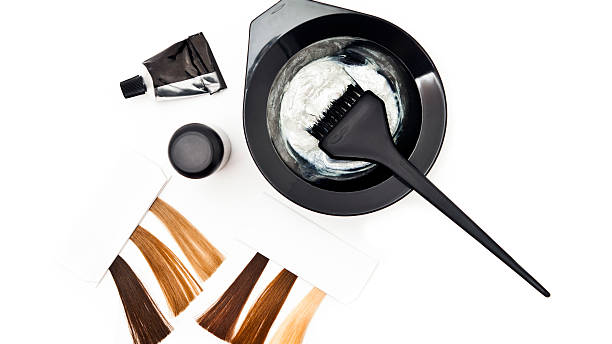Can You Color Your Hair After Keratin Treatment? Expert Guide & Tips
Discover whether you can color your hair after a keratin treatment with YOGI CARE's expert guide. Our comprehensive tips help you maintain vibrant, healthy hair without compromising your keratin treatment's effectiveness. Explore the insights now and achieve the perfect look. Learn why YOGI CARE is your trusted solution for post-treatment hair coloring.
- What is a Keratin Treatment?
- How Does Keratin Affect Hair Structure?
- How Does Hair Dye Interact with Keratin-Treated Hair?
- How Long Should You Wait to Color Hair After Keratin?
- Steps to Safely Color Keratin-Treated Hair
- Pre-Coloring Preparation
- Choosing the Right Hair Dye
- Potential Risks of Coloring After Keratin
- Post-Color Care for Keratin-Treated Hair
- Conclusion
- FAQs
What is a Keratin Treatment?
How Does Keratin Affect Hair Structure?

How Does Hair Dye Interact with Keratin-Treated Hair?
How Long Should You Wait to Color Hair After Keratin?
Steps to Safely Color Keratin-Treated Hair

Pre-Coloring Preparation
Choosing the Right Hair Dye
Potential Risks of Coloring After Keratin
Post-Color Care for Keratin-Treated Hair
Conclusion
FAQs

Different Types of Hair Dye and Colouring Techniques Explained

How to Choose the Right Hair Color for Your Hair | Ultimate Guide

What Is the Best Shampoo for Oily Hair? Expert Tips on Geting Rid of Greasy Hair

Hair Care Trends 2026: Comprehensive Insights into the Future of Healthy Hair

What Is Sulfate Free Shampoo | YOJI Hair Care Guide
Solutions
How to choose the best hair treatment products for my hair type?
Consult us or refer to the solutions page on YOGI CARE website to help you find good hair treatment products.
What should I do if I experience irritation?
If irritation occurs, discontinue use immediately and consult a professional for advice.
What hair concerns can YOGI CARE's products address?
YOGI CARE's products can address various concerns including dryness, frizz, hair loss, dandruff, and scalp sensitivity.
For Products
Do YOGI CARE offer sample for wholesale hair care?
Yes, Samples are available.
Logistics
How long does shipping of wholesale natural hair care products take?
Shipping times of wholesale natural hair care products vary by location, but most orders are processed within 3 days and shipped within 7 days.
After-Sales Support
How can I get support after hairdresser products wholesale?
For any inquiries or support, feel free to contact our customer service team via email or phone.

Yogi Care Ubond Mate for Hair Repairing
Introducing YOGI CARE's Yogi Care Ubond Mate, the ultimate solution for hair repairing. This innovative formula revitalizes and strengthens damaged hair, ensuring a silky, smooth finish. Trust Ubond Mate for unmatched hair repair. Discover the transformative power of YOGI CARE today!

Yogi Care Aroma Shampoo
Yogi Care Aromatherapy Shampoo is designed to deliver a luxurious and soothing hair care experience by blending the benefits of essential oils with high-quality ingredients. Infused with botanical extracts and aromatherapeutic fragrances, this shampoo gently cleanses the scalp and hair while promoting relaxation and overall well-being. Key ingredients, such as natural oils like Argania Spinosa (argan) oil and Persea Gratissima (avocado) oil, work to nourish and hydrate hair, leaving it soft, smooth, and manageable. Additionally, the presence of aromatic essences creates a calming spa-like experience, making it ideal for those seeking both hair care and mental relaxation. Suitable for all hair types, this shampoo can be used daily to maintain healthy, shiny hair while indulging in the therapeutic benefits of aromatherapy.

Yogi Care Ubond Hair Straightening Cream A

Yogi Care Uplex A Hair Bond
Exclusive Formula To Improve The Health Of The Hair. Repairs Damaged Hair And Stop Hair Breakage The natural moisturizer will help repair, dry,brittle and damaged hair from blow drying, flat ironing and sun exposure.
© 2025 YOGI CARE All Rights Reserved.


